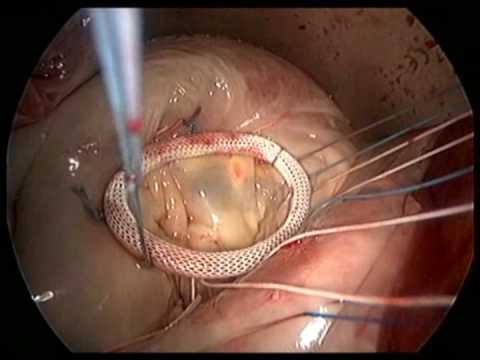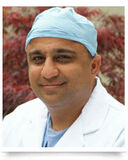“Can The Mitral Valve Repair Ring Be Too Tight?” Asks Bruce
By Adam Pick on September 1, 2010
Here’s a great question from Bruce about mitral valve repairs, tight annuloplasty ring and post-operative complications.
Bruce writes, “Hi Adam, I read your book about a year ago, before my surgery, and have faithfully read your newsletter. What have you ever heard about patients who had mitral valve repairs via open heart surgery and afterwards find the repair annuloplasty ring was a bit tight resulting in irregularities showing up in treadmill stress echocardiograms and shortness of breath? Thanks, Bruce”

While Bruce raises a great question about tight annuloplasty rings, I didn’t have a great answer. That said, I contacted Dr. Paul Massimiano, from Inova Heart & Vascular Institute, in Falls Church, Virginia.
Dr. Massimiano is a mitral valve specialist, known for his work with minimally invasive approaches. In response to Bruce, Dr. Massimiano first discussed the basic objective of mitral valve repair specific, heart valve anatomy and ring use:
A basic principle of mitral valve repair is to restore the overall geometry of the valve to a more normal size-and-shape by using a ring or band. Valves that are leaking almost always have some degree of dilation or stretching that is a contributing factor. The purpose of the ring or band is to help stabilize the repair by reducing the enlargement so that the mitral leaflets are close enough together to get a good seal… what is referred to as a good surface of coaptation.
Specific to a tight annuloplasty ring, Dr. Massimiano noted:
As with any operation, it is possible to “overshoot the mark” and have the valve tightened too much. This can often be a complex problem… The ring may be too small. Or the ring may be a reasonable size, but there is too much leaflet tissue within the ring which can result in obstruction to the blood flow from the ventricle to the aorta. In the first instance, the tight ring may result in mitral stenosis. In the second case, the repair may result in Systolic Anterior Motion of the valve — which can cause outflow tract obstruction. Both of these situations may result in symptoms, particularly with exercise. Depending on the severity of the problem, most patients can be treated medically, although a small number may require repeat surgery with either re-repair or mitral valve replacement.
I hope this helped Bruce (and perhaps you) learn more about mitral valve repair surgery and tight annuloplasty rings.
Thanks to Bruce for sharing his question. And, thanks to Dr. Massimiano for sharing his clinical expertise.
Keep on tickin!
Adam
|
Jane Grande-Allen says on September 1st, 2010 at 4:43 pm |
|
Dear Adam, I just wanted to leave you a note about how much I enjoyed reading your website. I am a professor of Bioengineering at Rice University and my lab does research on heart valve disease. I got my postdoctoral training at the Cleveland Clinic and it’s great to hear about the wonderful work my former colleagues are doing. I also just started teaching a graduate course on “Cardiac Surgery and Bioengineering” and when I get to the heart valve lectures I will be sure to recommend your website. I commend you for this educational resource and very personal website and I hope that many others find this as inspirational as I have! Sincerely, |
 |
|
Adam Pick says on September 1st, 2010 at 7:07 pm |
|
Hi Jane, Thanks for the very kind words. And, thanks for your ongoing pursuit of health hearts! Keep on tickin! |
 |
|
Rebecca Roberts says on September 1st, 2010 at 7:14 pm |
|
Bruce: |
 |













